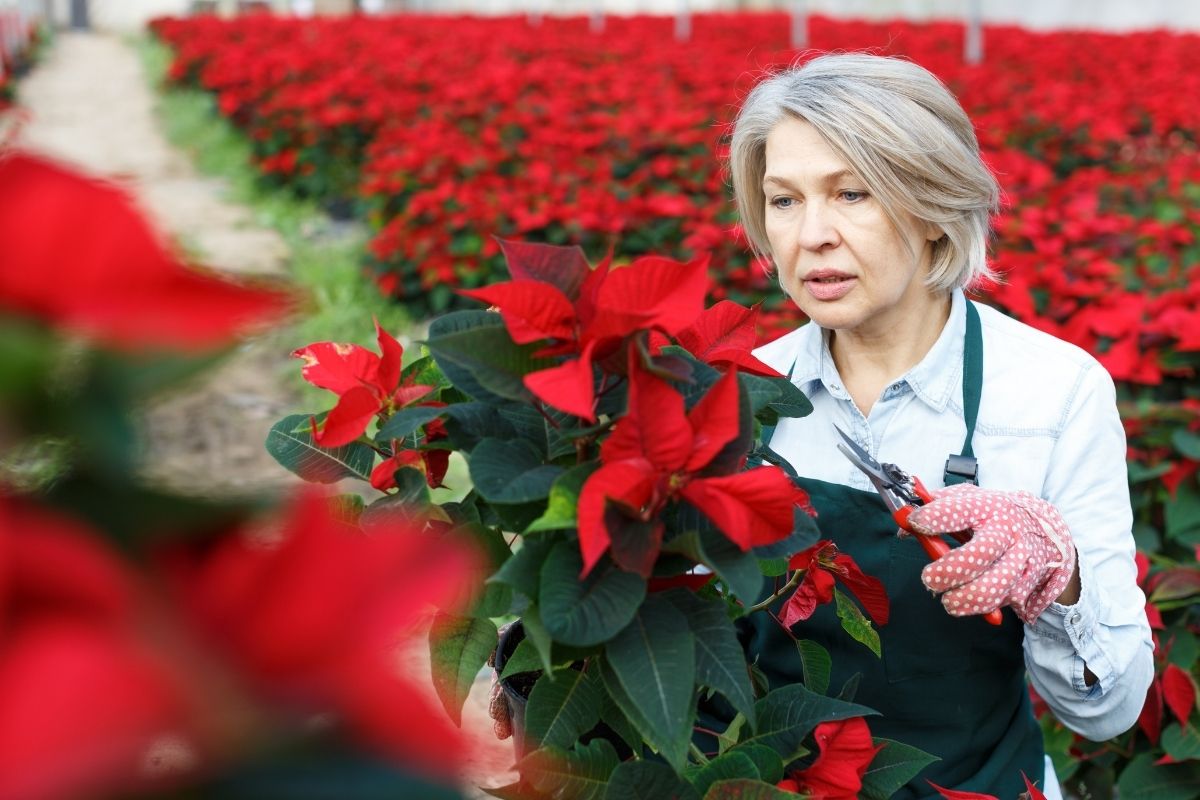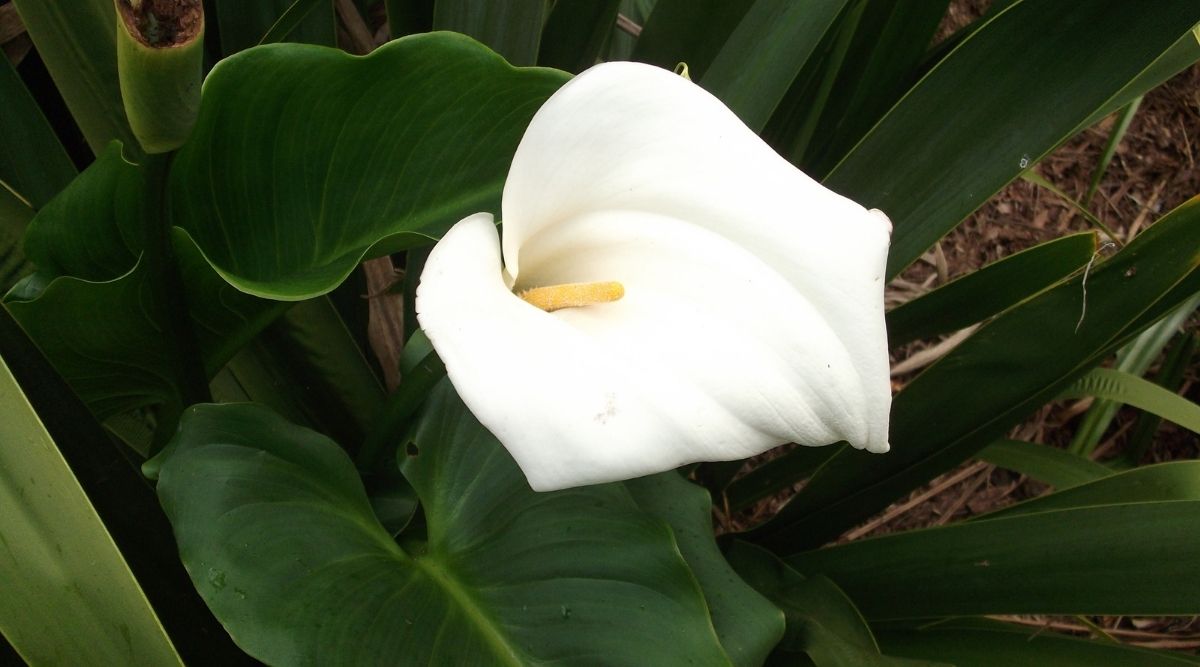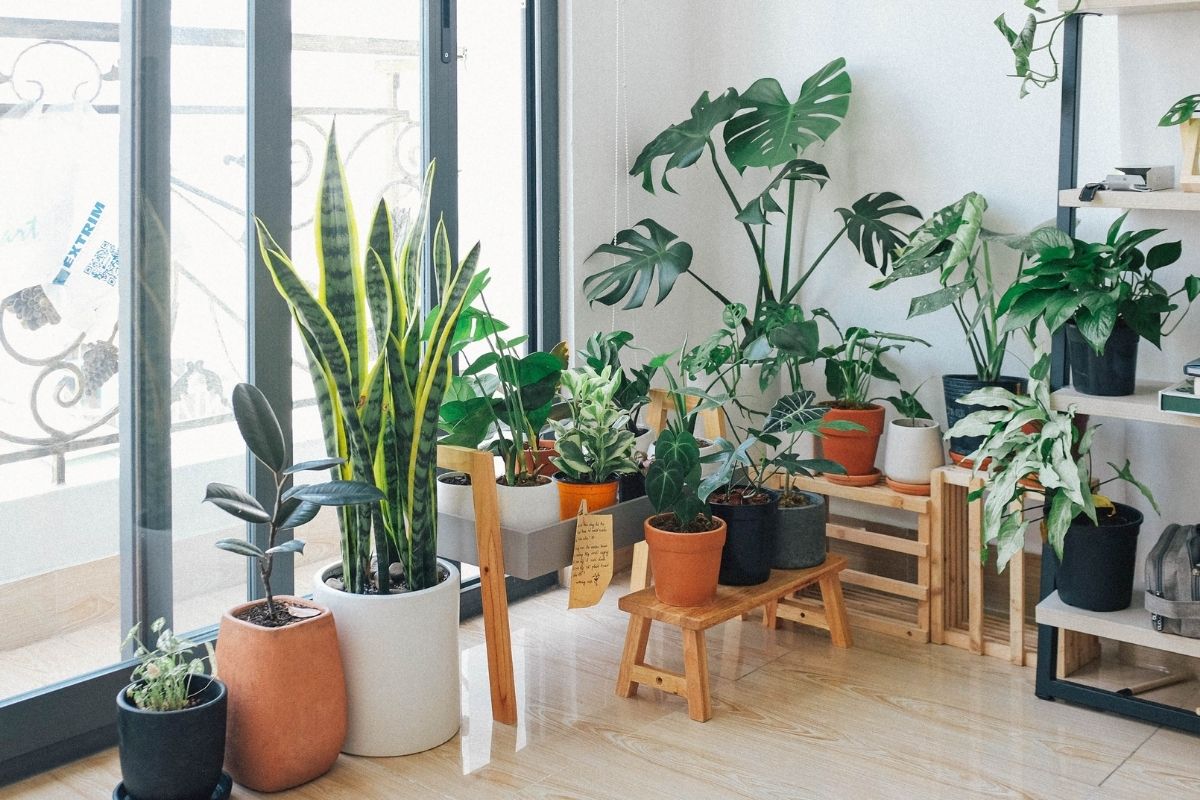Whilst poinsettias are known for their wonderful color during the holiday season, they are actually small shrub-like plants that grow wild in the tropical forests of Mexico.

They are not difficult to generally maintain, but they are known for not living for a very long time. If you give them the correct care, then they are likely to last a lot longer, giving you a bright and cheerful color long after Christmas is over.
Knowing when to water this flower can be tricky, so if this is something that is on your mind right now, then you have arrived at the right place. Read on to find out how to water a poinsettia correctly to avoid doing more harm than good.
When To Water A Poinsettia
When it comes to a poinsettia, too little or too much water can harm the plant just as much as no water at all. For this reason, you are going to want to check that the poinsettia is ready to take on more water.
Firstly, have a feel of the top of the soil. If it looks dark and feels moist, then it is not time to water the plant. If it is dry, but not bone dry as if you have not watered it in a while, then it is time to water it.
You can also do the finger test by putting your pinky finger a few inches below the surface of the soil. If it is dry, the plant will want to be watered.
If you pick up the plant, and it is extremely light, then you have potentially left it a bit too long between watering times. To really understand this method, feel the weight once it has been watered, and compare this after a day or two.
To put it simply, if the soil is light and dry, water it. If it is dark and moist, it is not ready to be watered.
How Much Water Does A Poinsettia Need?
How much water a poinsettia needs all depends on when it is time to water the plant or not. If you use the above method of watering times.
Rather than just watering a plant as a part of the cleaning schedule, you will own a poinsettia that thrives, rather than looks over watered or dehydrated.
The best way to know whether a poinsettia needs watering is by checking to see if it is thirsty or not – but not too thirsty. If the soil is dry, then you will want to give the plant some water. If the soil is moist, then it does not need any water.
Too much water may risk root damage and fungus growing, whilst not enough water may cause the plant to dry out completely. Both of these will lead to the death of the poinsettia.
The Best Way To Water A Poinsettia
A poinsettia does well with a drainage hole in its container to avoid having lack of airflow and sitting in moist soil for a long period of time.
If left without drainage holes, the roots may suffer from bacteria growth which will damage the plant, as well as general root rot caused by the wet soil.
The poinsettia needs a drainage hole to remove excess water and to allow it to ‘breathe’. If you find that your plant does not have a drainage hole, then poke something sharp through the container to make one or two.
If your poinsettia was bought with extra decoration like a shiny wrapper over the pot, then remove this. It can cause the buildup of moist soil to linger and make the plant rot. If you do want to keep this on, allow the shiny wrapper to drain fully after every water.
To water, place the poinsettia in the sink and allow the water from the faucet to drip slowly into the soil until you see it seeping from the drainage hole. Once this part is over, allow the poinsettia to sit and drain, and then place it on a tray.
Always make sure that it drains fully and never sits in a pool of water.
Extra Care Tips For A Poinsettia

Once you have watered your plant, you will want to place it in a bright area of the room away from direct sunlight. It needs around six to eight hours of sunlight each day which can sometimes be impossible.
When that happens, you can buy a light that serves as sunlight for a plant.
To avoid the leaves dropping, do not place it near a heat source, and that does include direct sunlight. So think about placing it away from a window, for example, or heater. It is the same with drafts too!
Signs Of A Dehydrated Poinsettia
If you have noticed that the leaves of the poinsettia are curling and the plant is wilting, then there is a good chance that it is being under watered or is living in a low-humidity room.
A dehydrated plant could be due to you not watering the poinsettia enough, or only watering the plant lightly. This is when only the top of the soil is taking in water, leaving the plant not able to absorb the correct amount of water.
To water the poinsettia, make sure that between each watering that the soil dries out slightly to avoid both overwatering and under watering.
Signs Of An Overwatered Poinsettia
The first signs that your poinsettia plant might be overwatered is that the leaves will start to turn a brown and yellow color. If it is a severe case of overwatering, then the plant will also start to wilt.
If you suspect that you may have overwatered your poinsettia, then first, stop watering the plant. Place it in a bright area of the room and keep your eye on it.
Hopefully it will return to normal and the soil will dry up, however you may have to inspect the roots to make sure nothing has happened below the surface.
Make sure your poinsettia has adequate drainage in their container because they do great in well-drained soil.
How To Keep A Poinsettia Alive All Year
It is actually possible to keep a poinsettia alive all year round, not just for the holiday season. Whilst the flowers and leaves will drop, if looked after during this time, it will bloom again once the dormant period is over.
Once the plant has lost its leaves and finished its final blooming around springtime, trim the stem back and prune any of the old flowers and leaves.
Keep the plant in a cooler, but not cold, area once the summer months roll round. You do not want it becoming too hot, so always make sure that it is not overheating.
There is a chance that your flowers may not bloom again, but so long as you occasionally water the plant, as well as add fertilizer to the soil a few times during the year, they should bloom again.
If you want to encourage them to bloom, around October you should place them in darkness for around 14 hours each night to encourage the plant to begin the blooming process.
So, instead of throwing them away, give them a little extra care and attention.
Final Words
Whilst a poinsettia is generally easy to care for, they can be difficult to keep alive once the holiday season is over. The majority of people will throw the plant away, but if cared for they can bloom again the following Christmas.
They also do very good living in well-drained soil, and will thrive if given the correct amount of water. The best way to do this is not to allow the soil to dry out too much, and instead only slightly before watering the plant again.
- Best Hanging Plant For Low Light - September 4, 2023
- Best Indoor Plants Florida - August 28, 2023
- Best Plants For Bathroom Smells - August 21, 2023








